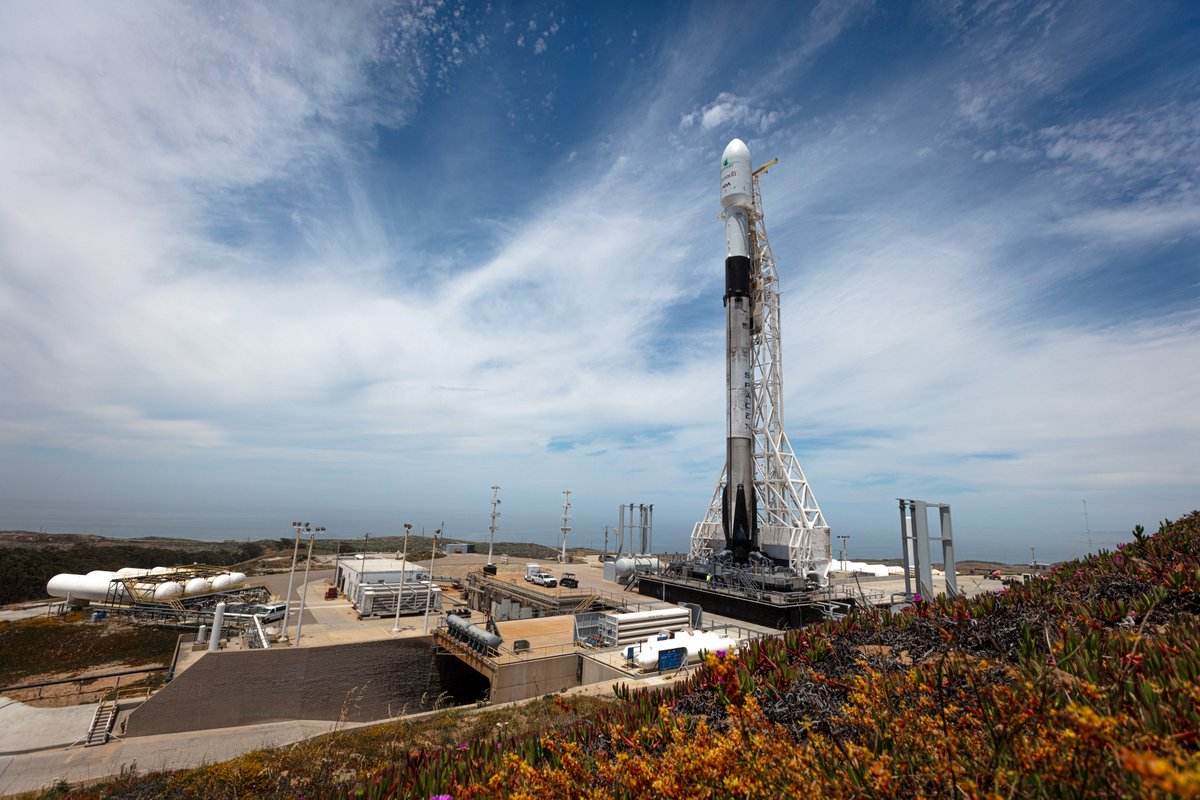Space News & Blog Articles
SpaceX going for record-breaking 32nd launch of the year
 File photo of a SpaceX Falcon 9 rocket standing vertical at Space Launch Complex 4-East at Vandenberg Space Force Base, California. Credit: SpaceX
File photo of a SpaceX Falcon 9 rocket standing vertical at Space Launch Complex 4-East at Vandenberg Space Force Base, California. Credit: SpaceX
SpaceX is poised to launch 46 more Starlink internet satellites on a Falcon 9 rocket Thursday from Vandenberg Space Force Base in California. The mission will mark SpaceX’s 32nd launch since Jan. 1, breaking the company’s record for Falcon 9 flights in a year.
And the year is barely half over, meaning SpaceX is on pace to nearly double the number of launches accomplished in 2021. SpaceX has launched more successful missions into orbit so far this year than the combined efforts of any other nation, and the company is far outpacing its chief competitors in the commercial marketplace.
United Launch Alliance, a rival in the competition for U.S. military launch business, has successfully launched four times this year. Arianespace, the European commercial launch company, has accomplished three missions so far in 2021.
SpaceX said its first 31 missions of the year delivered around 351 metric tons (about 774,000 pounds) of payload mass into orbit. The flights have carried astronauts to the International Space Station, launched hundreds of small satellites for the Starlink network and customer fleets, and deployed national security payloads for the U.S. government’s spy satellite agency.
Liftoff of SpaceX’s Starlink 3-2 mission is set for 10:39:40 a.m. PDT (1:39:40 p.m. EDT; 1739:40 GMT) Thursday from Space Launch Complex 4-East at Vandenberg, a military spaceport about 140 miles (225 kilometers) northwest of Los Angeles.
The mission will also break the record for the shortest span between SpaceX launches from the West Coast spaceport, reducing the turnaround time from 23 days to 11 days. SpaceX’s previous flight from Vandenberg occurred July 10 with an earlier batch of Starlink internet satellites.
The launch Thursday will be the seventh SpaceX mission from Vandenberg this year.
The 46 Starlink satellites will launch into one of five orbital “shells” in SpaceX’s internet constellation. The Falcon 9 launch July 11 was the first dedicated Starlink mission heading for one of the network’s two polar orbit shells. SpaceX has previously launched satellites into the other three shells at inclinations of 53.0 degrees, 53.2 degrees, and 70 degrees to the equator.
The booster flying on Thursday, known as tail number B1071, will be making its fourth trip to space. SpaceX’s drone ship “Of Course I Still Love You” is in position in the Pacific Ocean a few hundred miles south of Vandenberg for landing of the first stage about eight-and-a-half minutes after liftoff.
The first stage will fire its nine kerosene-fueled Merlin engines for two-and-a-half minutes to propel the stack of Starlink satellites toward space. An upper stage will take over the flight to inject the payloads into orbit as the first stage descends toward the drone ship.
A second burn by the upper stage engine will place the Starlink satellites into a polar orbit ranging between 191 and 199 miles (308-by-320 kilometers) above Earth, at an inclination of 97.6 degrees to the equator.
Deployment of the Starlink satellites from the Falcon 9’s upper stage is expected about 63 minutes after liftoff. Four retention rods will jettison to allow the flat-packed Starlink satellites to fly free of the rocket.
After separating from the Falcon 9, the Starlink satellites are expected to disperse and extend solar panels to begin generating electricity to recharge their batteries. The satellites will go through an automated checkout and activation sequence, then use krypton-fueled ion thrusters to raise their altitude to 348 miles (560 kilometers), where they will enter operational service in the Starlink network.
The Starlink satellites each weigh more than a quarter-ton, and are built on SpaceX’s Starlink assembly line in Redmond, Washington. The spacecraft are fitted with laser inter-satellite links to facilitate data transfers in orbit, without needing to relay signals through ground stations, which come with geographical, and sometimes political, constraints. Laser crosslinks can also reduce latency in the Starlink network because signals need to travel a shorter distance.
SpaceX’s Starlink network provides low-latency broadband internet service to consumers around the world. The fleet is the largest constellation of satellites in orbit, with 2,115 Starlink spacecraft currently in service, and 386 more satellites raising their orbits or drifting into their operational positions in the network, according to a tabulation by Jonathan McDowell, an astrophysicist and expert tracker of spaceflight activity.
The 46 new satellites set for launch Thursday will bring the total number of Starlink spacecraft deployed to date to 2,904.
This email address is being protected from spambots. You need JavaScript enabled to view it. the author.
Follow Stephen Clark on Twitter: @StephenClark1.
When you subscribe to the SpaceZE News Feed, we will send you an e-mail when there are new updates on the site so you wouldn't miss them.

